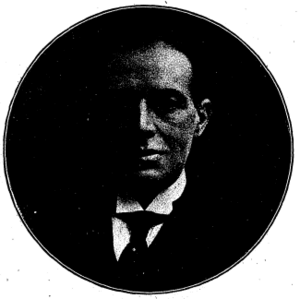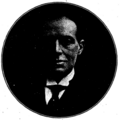Ealing (UK Parliament constituency) facts for kids
Quick facts for kids {{{Name}}}[[{{{Type}}} constituency]] |
|
|---|---|
| [[Image:{{{Map1}}}Constituency.svg|120px|]] [[Image:England{{{Map2}}}.svg|120px|]] |
|
| {{{Name}}} shown within [[{{{Entity}}}]], and {{{Entity}}} shown within England | |
| Created: | {{{Year}}} |
| MP: | {{{MP}}} |
| Party: | {{{Party}}} |
| Type: | House of Commons |
| County: | [[{{{County}}}]] |
| EP constituency: | [[{{{EP}}} (European Parliament constituency)|{{{EP}}}]] |
Ealing was a special area in west London that elected one person to the House of Commons. This person is called a Member of Parliament (MP). They represent the people of Ealing in the UK Parliament.
The Ealing area was a "parliamentary constituency" from 1885 to 1945. During this time, many more people moved to the area. Until 1918, it included places like Chiswick and Acton.
Contents
What is a Parliamentary Constituency?
A parliamentary constituency is like a special zone or district. People living in this zone vote for one person to be their Member of Parliament (MP). This MP then speaks for them in the UK Parliament.
Where Was Ealing Constituency?
The boundaries of the Ealing constituency changed a bit over time.
Ealing's Early Boundaries (1885–1918)
From 1885 to 1918, the Ealing constituency included several local areas. These were the civil parishes of Ealing, Acton, Greenford, Chiswick, and Perivale. It also included a part of Hanwell.
Ealing's Later Boundaries (1918–1945)
From 1918 until 1945, the area changed. It then covered the Municipal Borough of Ealing. This borough included Ealing itself, and later added Greenford (with Perivale and West Twyford) and Hanwell.
A Brief History of Ealing's Seat
The Ealing constituency was first created in 1885. This happened because of a law called the Redistribution of Seats Act 1885. It allowed people to vote for their MP starting from the 1885 general election.
The constituency was eventually stopped in 1945. This was before the 1945 general election. After that, the area was split into two new constituencies: Ealing East and Ealing West.
Who Represented Ealing?
The Ealing constituency had three different Members of Parliament during its existence. They were all from the Conservative Party.
| Election | Member | Party | |
|---|---|---|---|
| 1885 | Lord George Hamilton | Conservative | |
| 1906 | Sir Herbert Nield | Conservative | |
| 1931 | Sir Frank Sanderson | Conservative | |
| 1945 | constituency abolished | ||
How Elections Worked in Ealing
Elections are how people choose their representatives. In Ealing, voters went to the polls to pick their MP. The person with the most votes won. Sometimes, if only one person wanted the job, they won without anyone else voting. This is called being "unopposed."
Early Elections (1880s-1900s)
In the first election in 1885, Lord George Hamilton won for the Conservative Party. He received 61.8% of the votes. The next year, he was the only candidate, so he won without a vote. This happened again in 1895 and 1900.
In 1906, Herbert Nield became the new MP for Ealing. He also represented the Conservative Party.
Later Elections (1910s-1930s)
Herbert Nield continued to be the MP for Ealing through several elections. He won in January 1910 and again in December 1910 without any opponents. He also won in 1917 and 1918.
In 1931, Sir Frank Sanderson became the new MP for Ealing. He was also a Conservative. He won with a very large majority, getting 82.7% of the votes. He was re-elected in 1935.
The Ealing constituency was set to have another election in 1939 or 1940. However, World War II started, so the election did not happen. The constituency was then abolished in 1945.
Images for kids




